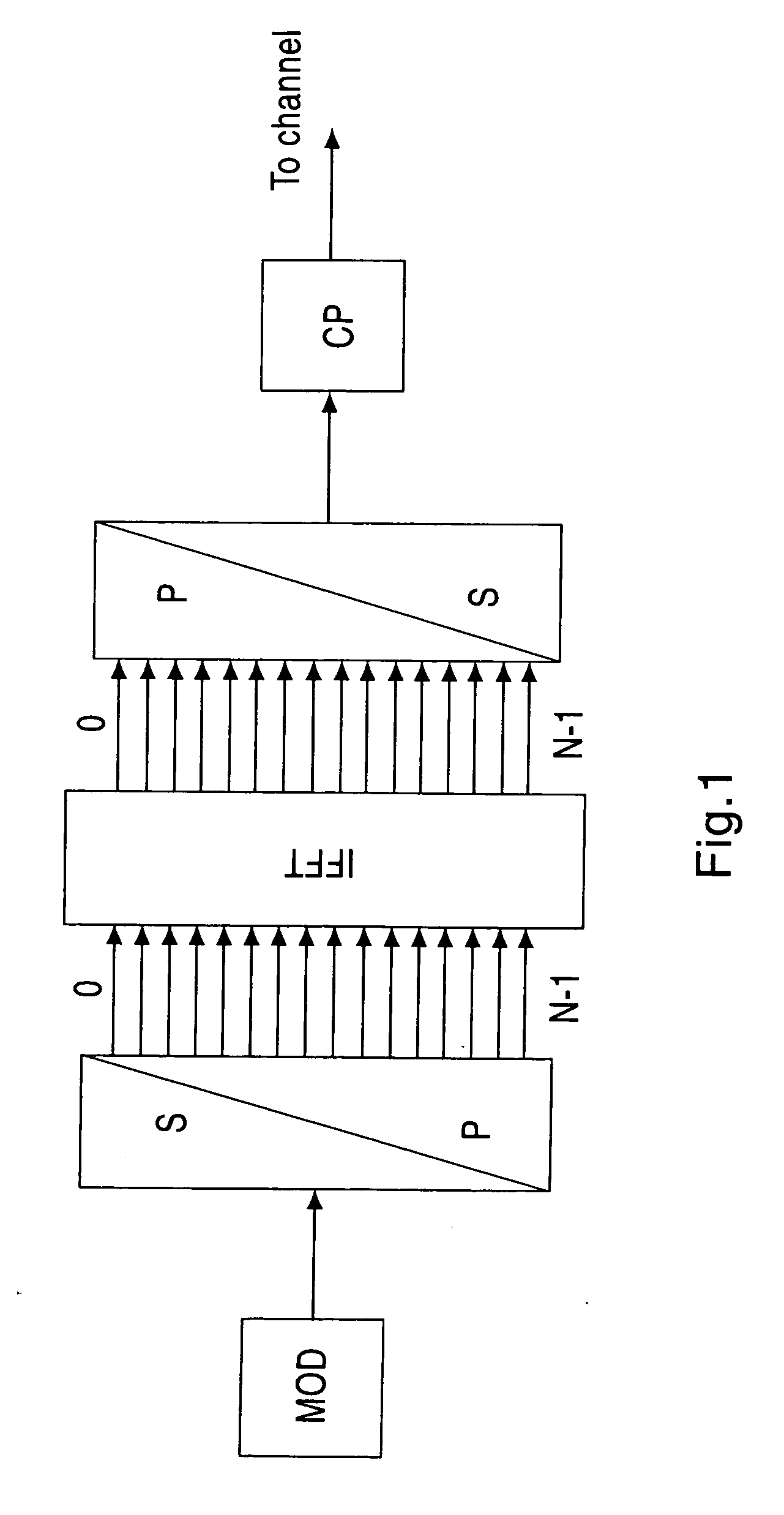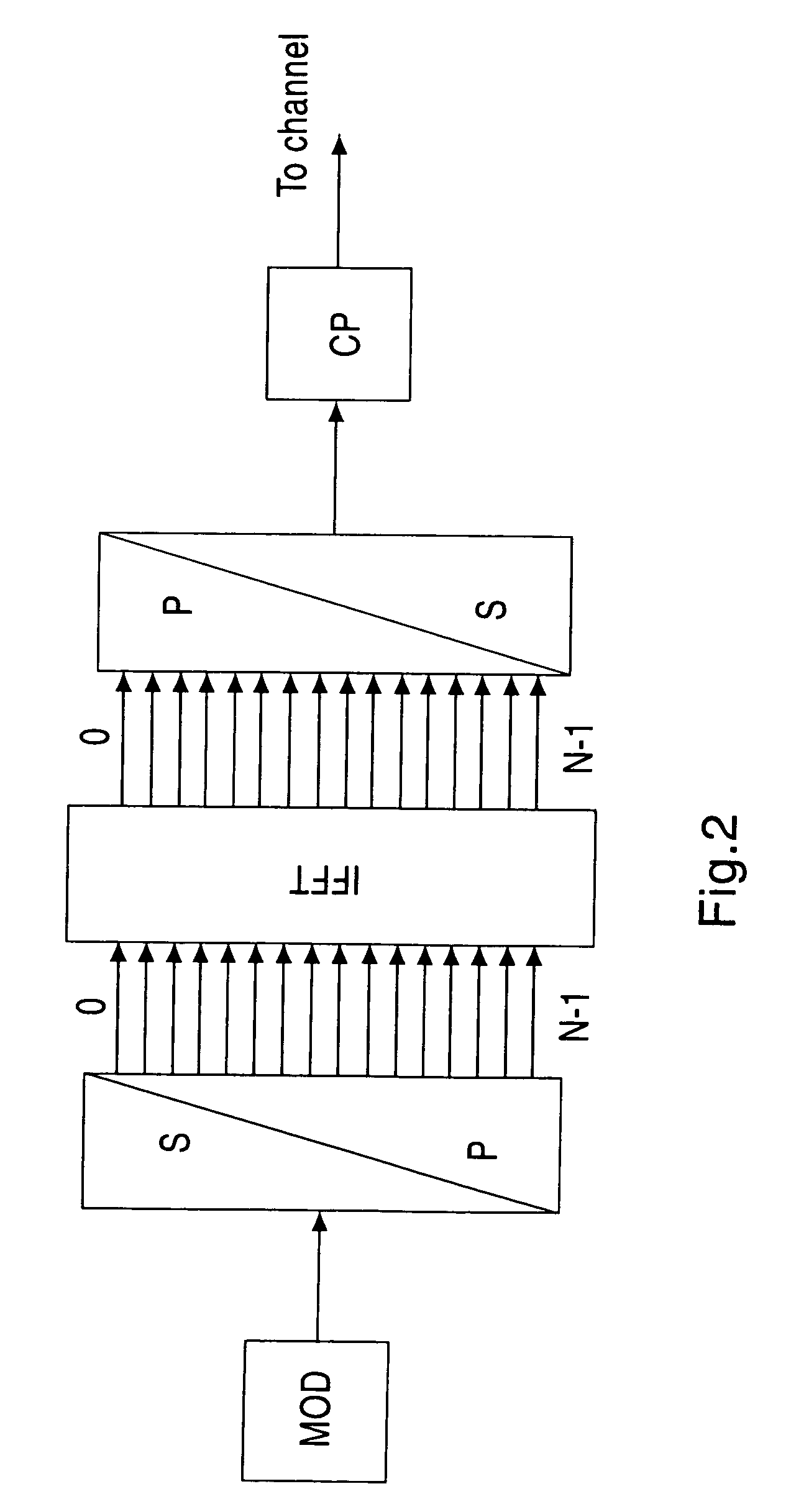Uplink acknowledgment channel in wireless communication
a wireless communication and acknowledgment channel technology, applied in wireless communication, digital transmission, wireless communication, etc., can solve the problem of unbalanced link between a base station and a mobile station
- Summary
- Abstract
- Description
- Claims
- Application Information
AI Technical Summary
Benefits of technology
Problems solved by technology
Method used
Image
Examples
Embodiment Construction
[0022]In orthogonal frequency-division multiplexing (OFDM), bandwidth of B is separated into N orthogonal sub-carriers. In typical implementations the number of orthogonal sub-carriers is power of 2 (for example, 64, 128, 256 and so on up to 8192) due to simple realization of orthogonal sub-carriers through a fast Fourier transform (FFT). Selected subcarrier spacing (FFT size) depends on the expected frequency selectivity in the radio channel. Mechanisms that may be required to create OFDM transmission are depicted, for example, in FIG. 1. In FIG. 1, a modulated signal is converted to N parallel signals, processed with a FFT from frequency to time domain, and then again serialized. Before digital to analog (D / A) conversion typically a cyclic prefix (CP) is added to the OFDM symbols. OFDM transmission is used today, for example, in Institute of Electrical and Electronics Engineers (IEEE) standards IEEE 802.11 and IEEE 802.16 as well as in ultra-wideband (UWB) systems.
[0023]Orthogonal...
PUM
 Login to View More
Login to View More Abstract
Description
Claims
Application Information
 Login to View More
Login to View More - R&D
- Intellectual Property
- Life Sciences
- Materials
- Tech Scout
- Unparalleled Data Quality
- Higher Quality Content
- 60% Fewer Hallucinations
Browse by: Latest US Patents, China's latest patents, Technical Efficacy Thesaurus, Application Domain, Technology Topic, Popular Technical Reports.
© 2025 PatSnap. All rights reserved.Legal|Privacy policy|Modern Slavery Act Transparency Statement|Sitemap|About US| Contact US: help@patsnap.com



